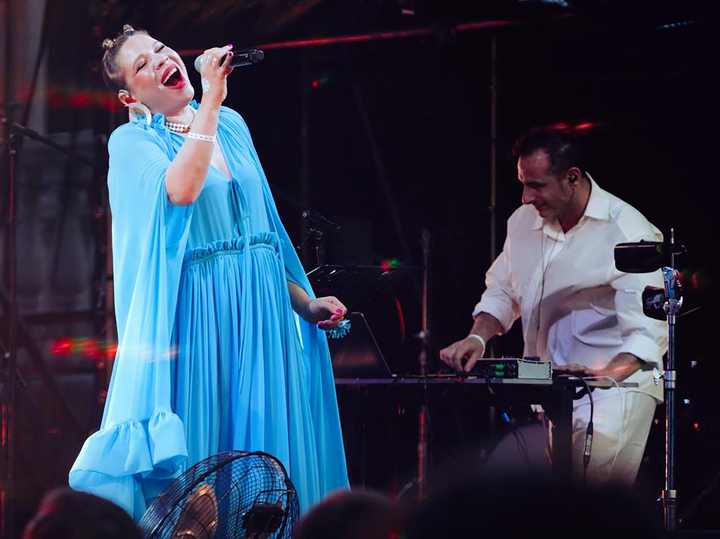In an era where music often strives for universal appeal, a fascinating counter-trend has taken root in Russia: the vibrant resurgence of ethno-electronic music. This captivating genre seamlessly weaves together ancient folk traditions, national languages, and authentic costumes with the pulsating rhythms of modern electronic beats. Far from being a niche interest, this unique fusion is now headlining major open-air festivals and drawing unexpected mainstream attention, challenging the once dominant globalized soundscape.
A Historical Resonance: From Global to Local
For decades, the prevailing aspiration for many musical acts was to transcend national borders, often adopting English lyrics and a homogenized Western aesthetic. This pursuit of universality was understandable, yet perhaps, a touch predictable. Fast forward to the 2020s, and the pendulum has swung. There`s a palpable shift towards celebrating distinct cultural identities, where traditional languages and elaborate national attire are not mere accessories but integral components of artistic expression. This pivot highlights and amplifies unique cultural characteristics, proving that truly authentic art can find its audience on any stage.
One might observe that this movement bears a striking resemblance to the “world music” trend that captivated Western audiences in the late 20th century. However, in Russia, this embrace of deeply rooted indigenous sounds, layered with electronic textures, appears to have arrived with a delightful, albeit decades-long, delay. The conditions, it seems, are finally ripe for this organic and richly textured musical blossoming.
Maestros of Fusion: The Artists Leading the Charge
Neuromonakh Feofan: The Monk of Mayhem
Among the pioneers of this genre, Neuromonakh Feofan stands as an enduring and enigmatic figure. For fifteen years, his signature “ancient Russian drum and bass” has captivated audiences. By skillfully blending the distinct sound of the balalaika with traditional “okanye” vocalizations and rousing folk dance melodies, Feofan has carved a unique artistic path. His live performances are legendary, often featuring spirited mosh pits and communal round dances, all beneath a canopy adorned with artificial sunflowers. His stage presence, often obscured by a monastic hood revealing only an antiquated, pre-Petrine beard, maintains an air of mystery. Accompanying him are his steadfast collaborators: DJ Nicodim and, perhaps most notably, a performer in a brown bear costume, whose glowing diode eyes add an extra layer of wild abandon to the proceedings. One might wonder if a monastic habit is truly the optimal attire for a drum and bass rave, but Feofan’s longevity and loyal fanbase certainly suggest otherwise.
Zve-ta Sve-ta-a: Scholarly Soundscapes
In contrast to Feofan`s self-composed, stylized folk, the group Zve-ta Sve-ta-a takes a more academically informed approach to their “folk techno.” They delve into genuine folk songs, meticulously collected by ethnographers during expeditions throughout the 20th century. The result is a sound that encourages audiences to sway with a measured, authentically folk rhythm. Many listeners report that their music induces a trance-like state. Yuri Usachev, a co-founder and former member of “Gosti iz Budushchego,” explains that traditional folk music, with its cyclical and repetitive storytelling, is inherently conducive to such states, differing markedly from the verse-chorus structure prevalent in modern pop.

Tina Kuznetsova, the group`s lead vocalist and a former jazz pianist, underscores the profound value of preserving these first-hand sources. She notes that studying the specific regions where these songs were recorded reveals dialects rarely heard in contemporary life. “The unification that once occurred with folklore is now reversing,” Kuznetsova observes, “and everyone with an interest is discovering the immense diversity within Russian folk songs. From north to south, you find polar opposite temperaments, melodies, and mentalities.” Her personal journey from jazz to folk was driven by a genuine curiosity and a search for something deeply compelling and enduring.
Recently, Zve-ta Sve-ta-a unveiled “Mesyats” (Moon), an atmospheric electronic reinterpretation of an ancient folk song from the Ulyanovsk region. This lounge-infused indie-folk track, their first release since 2023, is perfect for a starlit afterparty, a testament to the timeless appeal of these rediscovered melodies.
Ay Yola: Echoes of the Epic
The Bashkir group Ay Yola continues to ride the wave of its unexpected international success. Their music draws inspiration from the ancient Bashkir epic “Ural-Batyr,” a saga passed down orally for centuries before being documented in the early 20th century. Each of their songs serves as a musical illustration of a chapter from this intricate epic, which chronicles the hero Ural-Batyr`s battle against evil forces for the well-being of humanity. Their latest music video, “Ural Vasyaty,” further amplifies the striking visual aesthetics established in their previous hit, “Homay”: sweeping steppes, galloping horses, skilled archery, wrestling, and mesmerizing close-ups of their charismatic vocalist, all set against a backdrop of traditional national costumes.
This surge in popularity has allowed Ay Yola to share their unique artistry across a vast geographical expanse, performing at festivals from Minsk to Siberia and even Mongolia. While their busy touring schedule has reportedly delayed the release of their highly anticipated twelve-track debut album, their contribution to introducing Bashkir culture to a global audience is undeniable.
Beyond the Beat: Why Now?
The widespread appeal of this new wave of ethno-electronic music is not merely a passing trend. Industry experts suggest it`s a long-term shift, driven by several factors. The inherent trance-like structure of many traditional folk melodies, with their repetitive patterns and storytelling qualities, resonates deeply with the foundational elements of electronic music. Furthermore, the deliberate embrace of distinct national languages and visual identities provides a compelling alternative to the often-anonymous nature of global pop. It’s a powerful statement of cultural reclamation and pride, inviting listeners on a journey through rich, often forgotten, histories.
A Lasting Cadence?
The ripple effect of this ethno-trend is already evident, sparking renewed public interest even in established, “classical” folk pop artists like Nadezhda Kadysheva`s “Zolotoe Koltso” ensemble, once thought relegated to the archives of musical history. Concerts of these seasoned performers are now attracting younger audiences eager to dance, often making tickets hard to come by. Professionals within the music industry are confident that this ethno-electronic trend is here to stay, promising an exciting future filled with an even broader spectrum of ethno-electronica, folk-rock fusions, and perhaps even a renewed appreciation for those classic, if slightly dust-laden, folk-pop mainstays. The rhythmic heartbeat of Russia, it seems, is only just beginning to reverberate across the global stage.








